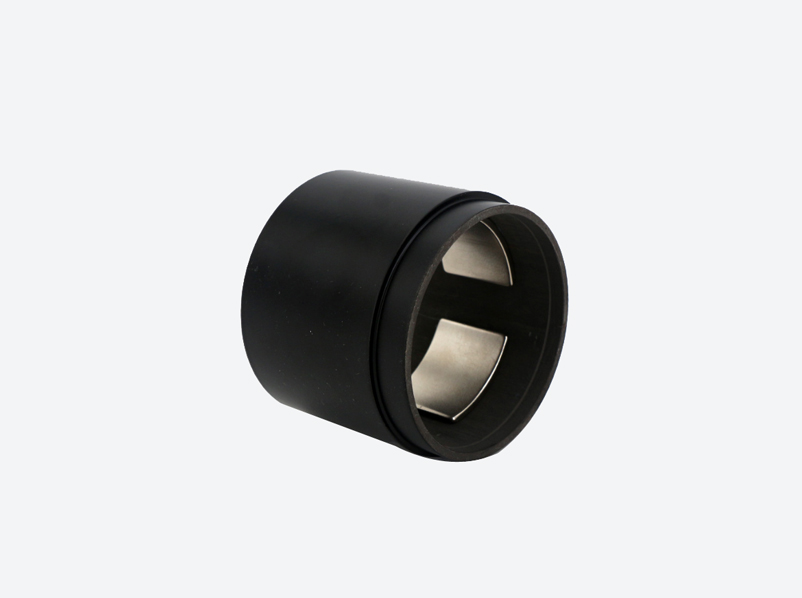Stepper motors, also known as pulse motors, are based on the most basic electromagnet principle, which is a freely rotatable electromagnet whose principle of action relies on changes in air-gap permeability to produce an electromagnetic torque. The original model was originated between 1830 and 1860. attempts for control purposes began around 1870, when it was applied to the electrode delivery mechanism of a hydrogen arc lamp. This is considered to be the original stepper motor. 1923, James Weir French invented the three-phase variable reluctance type (Variable reluctance), which is the predecessor of the stepper motor. At the beginning of the twentieth century, stepper motors were widely used in automatic telephone exchanges. As the western capitalist powers competed for colonies, stepper motors were widely used in stand-alone systems such as ships and aeroplanes that lacked AC power. With the invention of the transistor in the late 1950s, stepper motors also became more easily controlled digitally. After the 1980s, stepper motors became more flexible and versatile due to the emergence of inexpensive minicomputers with versatility.
The rotation of the stepper motor is through the stepper motor driver's electronic phase switching effect so that the fixed sub generates a rotating electromagnetic field, through the fixed sub and rotor magnetoresistance is the smallest place on the teeth, to attract the rotor to follow the fixed sub rotating electromagnetic field rotation, the fixed sub because of the magnetic force generated by the power, the rotor will not have electricity, with permanent magnets have magnetic force, so that the stepper motor is powered on the fixed sub and the rotor on the magnetic force of the magnetic force of each other attraction, the stepper motor began to rotate the work.
Arc and ring neodymium magnets for stepper motors

Rare earth neodymium magnets can provide good driving force to the stepper motor, so the difference of the magnet also determines the quality of the stepper motor, generally is the more high-performance magnets, the stepper motor speed is faster, the body is more stable, but the magnetic field driving force to a certain value, its extra magnetic field on the stepper motor will be less and less, so choose a suitable magnetic force of the magnets can be as much as possible to improve the efficiency of the stepper motor, and reduce unnecessary waste.
The application of Ndfeb magnets in stepper motors is reflected in the following aspects:
1. High Magnetic Energy Area and Strong Magnetic Performance: NdFeB permanent magnets have a high magnetic energy area and can generate a strong magnetic field. This allows stepper motors to generate sufficient torque in a small size for high-precision stepping motions.
2. Compact and lightweight: The high performance of NdFeB PM material allows for smaller and lighter stepper motor designs for applications where space is limited, such as robotics, medical devices, automation systems, and more.
3. High Accuracy and Stability: Stepper motors usually need to perform motion in precise positions. The strong magnetic properties of NdFeB permanent magnet material can ensure the stability and accuracy of stepper motors, reducing errors in motion.
4. Fast Response: NdFeB permanent magnet material can respond quickly to changes in current, which enables stepper motors to start, stop and adjust speed quickly for applications requiring high dynamic performance.
5. Energy saving: Due to the high energy efficiency of NdFeB permanent magnet material in generating magnetic field, stepper motors can achieve the same motion effect at lower power, thus reducing energy consumption.
In stepper motors, neodymium-iron-boron magnets are typically used in the rotor or stator portion of the motor to provide drive and torque. They can be placed on the pole ports of the motor and interact with the coils on the stator to produce the torque required for motor movement. Due to the strong magnetic properties of NdFeB magnets, stepper motors can achieve high resolution and accuracy for applications that require precise position control, such as printers, CNC machine tools, and precision instruments.
However, it should be noted that NdFeB magnets also have some limitations, such as being susceptible to temperature, humidity and external magnetic fields, and therefore require proper protection and design in their application. Also, due to their special nature during production and processing, they require special handling and processing techniques.
Related stepper motor magnet;
Stepper motor radial 24 pole magnetic ring 18mm x 10mm x 5mm
Common FAQs;
 China Neodymium And Ferrite Magnets Manufacturer & Supplier
China Neodymium And Ferrite Magnets Manufacturer & Supplier 


